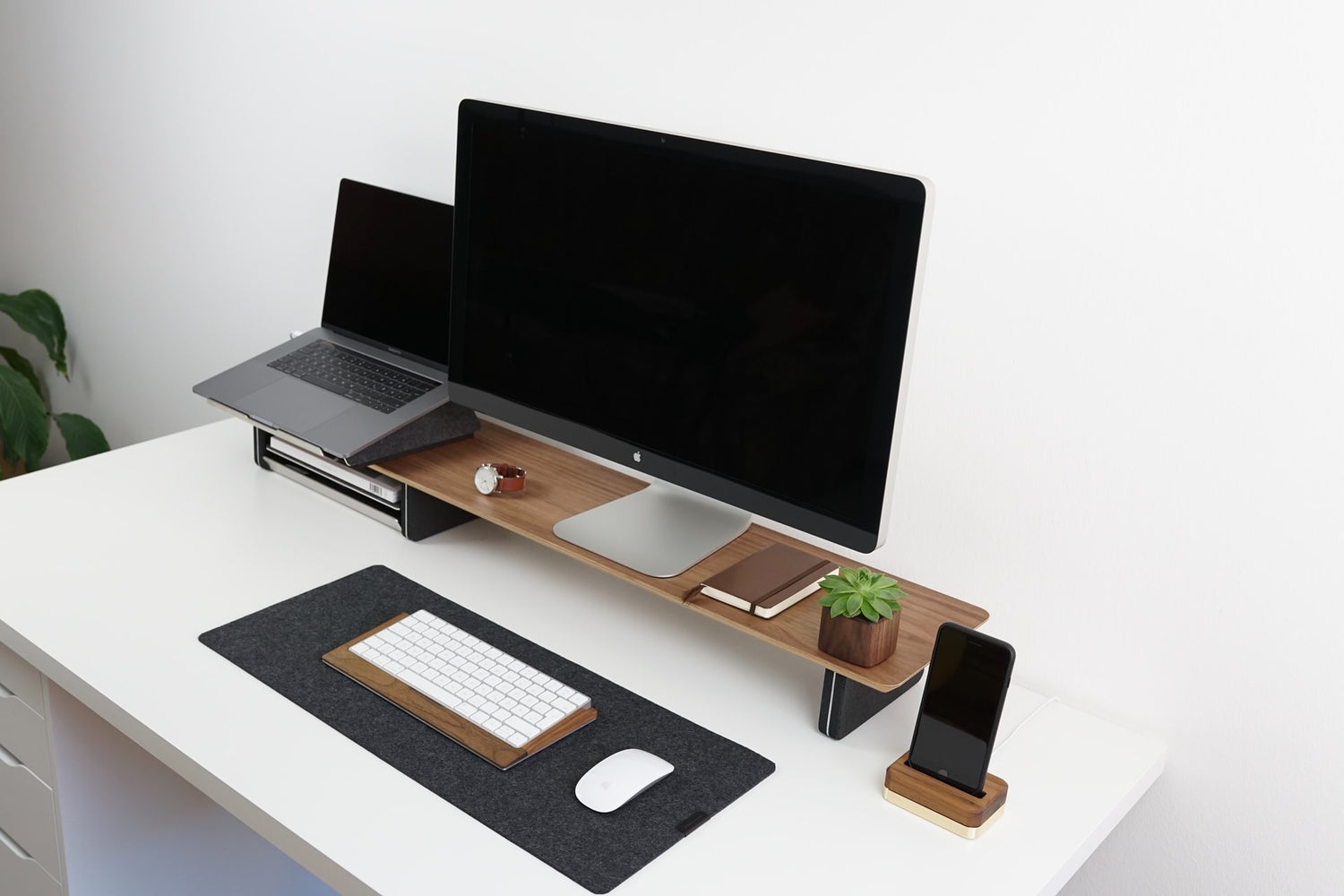Introduction
In this day and age, there is no shortage of people who use computers. The myriads of tasks that can be performed on a computer have increased the number of people who use them on a daily basis. However, it is important to remember that spending so much time in front of your laptop can cause you many different types of problems. One such problem is poor posture. Poor posture can lead to neck and back pain as well as wrist pain due to repetitive motion injuries caused by typing or mouse movements over long periods of time
Do you find yourself hunched over your laptop?
You might be hunched over your laptop and not even realize it. If you have a bad habit of hunching over your laptop, it could lead to neck and back pain, as well as wrist pain. It’s important that you sit up straight while working on your computer so that you don’t hurt yourself in the long run.
If you spend a lot of time at a desk or table, consider investing in a laptop stand so that there is no question about how you should be sitting while using your computer.
Has your neck and back been hurting lately?
If you’re like most people, then your neck and back are probably hurting at some point during the day. Neck pain is one of the most common complaints among workers, with 10-20% of workers reporting that they have problems with their necks. It’s no wonder why: we spend so much time hunched over laptops and desktops that our bodies don’t get enough exercise (we literally sit on our chairs).
This is where laptop stands come in handy! They can help improve posture by raising your laptop up to eye level or higher—keeping your eyes straight ahead instead of looking down all day.
Is it difficult to sit at your desk for long periods of time?
The answer is yes and no.
Sitting for long periods of time can cause back pain, neck pain, wrist pain and even eye strain. This can be particularly troublesome for people who sit at a desk all day to work on their laptops. If you're one of these people and find yourself spending more time than usual in front of your computer screen nowadays thanks to the Internet and other technological advances in society, then it might be good idea to get a laptop stand that will allow you to keep working with less strain on your body.
Do you use your laptop on the couch or in bed?
If you use your laptop on the couch or in bed, laptop stands are especially useful. They can be used to prop up your computer so that it's easier to view and type. This means that you won't have to look down at your screen to see what's happening, which can cause neck strain and back pain over time. If using a laptop stand while lying down, make sure the screen is angled up toward you so that it's not too far away from your face.
If so, you are not alone.
If so, you are not alone.
Many people use laptops in a bad posture. Bad posture can cause pain in the neck and back, as well as wrist problems. Laptop stands can help with these issues by helping you maintain proper posture while working on your laptop or tablet computer.
Many people are suffering from poor posture while using their laptops.
Most people don't realize that laptop computers are designed to be used in a variety of positions, including sitting at a desk, on the couch, or in bed. When you're using your laptop for extended periods of time, it's important to keep your neck and back from getting sore by supporting the device with a stand. We've come up with some recommendations for the best laptop stands available today!
Let’s take a closer look at the benefits of owning a laptop stand.
-
If you use your laptop for long hours each day, your posture may be suffering. A laptop stand will help prevent neck and shoulder pain by allowing you to sit up straight, place weight on the legs instead of the hips, and keep your eyes in line with the monitor (which means less eye strain).
-
Laptop stands are also beneficial for those who spend a lot of time looking at their screens. Since we spend so much time focusing on different things on our computers—from reading emails to watching Netflix—it’s important to make sure that everything is in alignment and properly positioned so that we don’t hurt ourselves while doing it.
-
Sitting improperly can cause back problems later on down the road, so it's crucial that you find a way to correct this issue now before it becomes too serious! Many people believe they're doing their bodies good by sitting cross-legged or leaning against pillows while they work; however this position actually puts more stress onto joints than simply sitting upright would have done!
The first benefit to having a laptop stand is that it will promote better posture when you are working on a computer.
-
The first benefit to having a laptop stand is that it will promote better posture when you are working on a computer.
-
When you use your laptop in your lap, the screen is likely at eye level, which means that you have to look down over the keyboard and lift your head to look at the screen. This can cause strain on your neck and shoulders as well as back pain.
-
When you use a laptop stand, however, the screen sits higher than your eyes do so that it's easier for you to see what's on it without straining yourself. It also allows for better circulation because there isn't as much pressure on any one part of your body (like in this case where all of it is focused around just one area). This means less risk of injury over time because less stress has been placed upon major joints such as elbows or knees while typing continuously throughout the day! Yay!
Your neck, lower back, and wrists can be affected by poor posture as well.
You may not be aware of it, but poor posture can also impact your neck, lower back, and wrists. While you might think that laptop stands are just for your neck and shoulders, they can actually help with other areas of your body as well.
One common condition that affects the neck is tendinitis. Tendinitis occurs when tendons become inflamed due to overuse or repetitive motions. Carpal tunnel syndrome (CTS) is another condition that causes arm pain and involves the median nerve in the wrist. CTS results from pressure on this nerve as it travels through a tunnel created by bones in the wrist; however, using a laptop stand should not cause CTS because there is no added pressure placed on these nerves when using one (unless you’re using an inappropriate stand).
Even if you have an ergonomic chair, it may still be helpful to have a laptop stand.
Even if you have an ergonomic chair, it may still be helpful to have a laptop stand. A stand can help you work in a more comfortable position and avoid unnecessary strain on your neck, back and eyes.
A portable laptop stand allows you to adjust the screen height of your laptop depending on where you'll be working (for instance, sitting on the couch or at a desk). For example, some stands allow you to use them while reclining in bed or watching TV; others are made specifically for traveling and can fold up into a small size that fits easily into luggage bags or backpacks.
A portable stand is lightweight enough that it won't take much effort to move from room to room—or even from home office to library! You'll find that these devices are also quite easy-to-use: simply lift up your computer screen so that it faces you instead of looking down towards the floor when reading long documents like books or articles online.
It is useful to have good posture when using your computer
Good posture is important when you're sitting at a computer. It can help prevent neck, back, wrist and eye strain.
Sit up straight with your shoulders squared and spine straight. Make sure your monitor is at eye level or slightly below so you don't have to crane your neck down to see it clearly. Put the laptop in front of you on a flat surface such as a desk or table that allows for easy typing without having to reach forward too much (i.e., if the laptop is placed too far away from you). Maintain an arm's length distance between yourself and the keyboard so that when typing, your arms are bent at approximately 90 degrees with wrists straight above hands resting on home row keys (i.e., not reaching forward). Position mouse between index fingers so that they can support weight evenly while remaining relaxed during use (don't press buttons with fingers curled into fists).
Your body should be relaxed but alert when using a laptop—not slumped over like some college student who hasn’t slept since failing out last quarter!
Conclusion
The laptop stand is a great tool to help improve your posture while working on a computer. It can be used for all types of laptops, including the Apple MacBook Air and Pro models. If you are looking for an affordable option that will provide health benefits such as less neck pain or lower back pain then this could be a good choice for you!


















Leave a comment
All comments are moderated before being published.
This site is protected by hCaptcha and the hCaptcha Privacy Policy and Terms of Service apply.